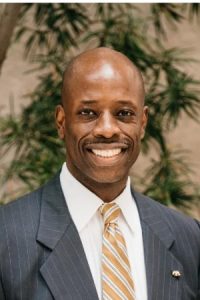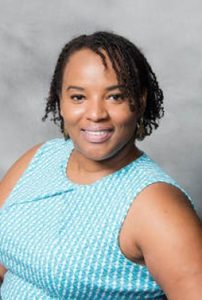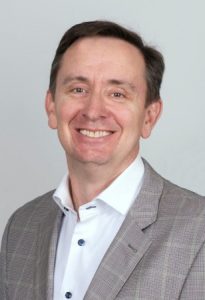CFT 35th Anniversary
by Derek Bruff, executive director
In honor of the Center for Teaching’s 35th anniversary, the CFT hosted a special anniversary panel on October 29, 2021, featuring staff and graduate student alumni of the CFT. The panelists discussed a series of questions on teaching and learning in higher education and the field of educational development. The perspectives shared by the panelists were insightful and inspiring, and I’m glad to share a recording of the panel, as well as highlights from the conversation, with the higher education community.

The panel’s moderator was Allison Pingree, senior instructional coach at the Teaching & Learning Lab at the Harvard Graduate School of Education and former Vanderbilt Center for Teaching director (1998 to 2011). Allison framed the conversation around honoring the past, engaging in the present, and envisioning the future. Specifically, she asked participants to share something they appreciated about their time at the CFT, some way that their CFT experience affects their career today, and their hopes (or fears) about the future of teaching and learning in higher education.
Honoring the Past

Remembering his time at the Center for Teaching, panelist Shederick McClendon, higher education consultant and senior partner at Sphinx Global Solutions and a former CFT master teaching fellow (2001-2002), said that what he really appreciated about his time at the CFT was that it provided “a safe space for reflection.” Shederick was grateful for “opportunities to reflect on how we [as teachers] prepared for class… how we were making it work in the moment, things we could improve on.”

Brielle Harbin, assistant professor of political science at the United States Naval Academy and a former CFT graduate teaching fellow (2014-2016), struck a similar note, appreciating the chance at the CFT “ to think deeply and critically about issues of differences in how they emerge in the classroom.” Brielle was co-organizer of two learning communities in the CFT’s “Teaching, Difference, and Power” series, and she called this a “formative experience” for her current role teaching at a military academy.

Panelist Katie Headrick Taylor, associate professor of learning sciences and human development at the University of Washington and a former CFT graduate teaching fellow (2012-2013), recalled “what a wonderful, humane, loving place the CFT was, at a time when grad school was stressful.” Katie appreciated the chance to work with graduate students teaching in different disciplines from her, providing her “a more complex and nuanced understanding of teaching in higher education.”

Our final panelist had the earliest connection to the history of the CFT. Peter Felten is now assistant provost for teaching and learning and executive director of the Center for Engaged Learning and professor of history at Elon University, but before that, he was an assistant and associate director at the Vanderbilt CFT (1999-2005). Peter’s sense of humor showed in his recollection, which focused on the Halloween parties that CFT assistant director Darlene Panvini used to host. Peter said those parties captured some of the spirit of the CFT in that they were both serious and fun. He recalled a colleague who dressed as the farmer in the famous Grant Wood painting American Gothic, complete with pitchfork and frame. (That colleague was me.) Peter said that the Halloween parties, like the CFT, blended “playfulness and rigor.”
Engaging in the Present
When asked how his time at the Center for Teaching helped equip him for his current work, Peter Felten noted that he was trained to work entirely by himself. “That’s how historians work,” he said. The CFT work environment, with colleagues from different disciplines, was much more collaborative. Peter worked closely with peers on a variety of projects, and sometimes just got together to discuss a journal article over bagels. “One of the things that fundamentally reoriented how am I as a professional,” he said, “was the relational work at the CFT.”
Katie Headrick Taylor echoed this sentiment. “I can’t overemphasize how collaborative the space was at the CFT,” she said, “and how that prepared me to not just think about supporting my current graduate students around research, but also supporting them around their own instruction.” She said her time at the CFT helped her approach her work on teaching and learning as a continuous collaboration with colleagues and with her students.
When asked how her CFT experiences affect her current work, Brielle Harbin noted that students at the United States Naval Academy come from every congressional district in the country and thus have very different experiences and perspectives they bring to the political science classroom. Brielle said her experiences as a graduate teaching fellow thinking critically about issues of difference helped prepare her for this sometimes challenging teaching environment. Without the “space to think about these things,” she said, “I don’t think I would have been able to step into these conversations.”
Shederick McClendon also pointed to the professional development he received at the CFT as a key part of his current work and practice. He both participated in and led workshops on discussion leading while at the CFT, and he drew good practices from that workshop as he moved into professional spaces. “In a classroom or in a meeting,” Shederick said that those lessons learned affect “how I shape the conversation, how I start and lead throughout.”
Envisioning the Future
When asked about her hopes and fears for the future of teaching and learning in higher education, both Katie Headrick Taylor and Brielle Harbin discussed higher education’s recent response to the COVID-19 pandemic. Katie noted that the move to online learning and instruction helped many teachers and students during a difficult time, but she worries about increasing pressure to shift more instruction online. “I feel like we are losing so many sense-making modes of our bodies when we are just sitting in front of our computer screens,” she said. In her research, she studies digital learning, so she’s no luddite. But she added, “We have to hold the physical and the digital up next to each other and really understand our reasons for engaging in one over the other.” Brielle pointed to all the lessons learned during the pandemic about “making more learning more accessible to people,” particularly students who benefit from different kinds of access to content, interaction, and assessment. She hopes that we’re not “myopic” and that we “hold onto some of these lessons.”
Katie and Brielle also mentioned the opportunities and challenges of an increasing diverse student population. “I’m so excited to see the increasing diversity in my classrooms,” said Katie,” and how their perspectives are changing the kinds of conversations we can have.” Brielle added that this diversity means more work needs to be done in the affective domain. “Do you have the soft skills to talk to your neighbor? To communicate with people who are different from you?” she asked. Addressing these needs can’t happen in just one course, however. “You need to think about revisions to curricula to actually track those types of skills,” Brielle said. “Those are larger institutional questions.”
Shederick McClendon also mentioned the challenges of teaching and learning in diverse environments, with a recommendation for centers for teaching and learning like our own CFT. “I hope that teaching centers put time and energy into anti-racist pedagogy,” he said. “I’ve had several students describe what trauma looks like to them in a classroom. I know some campuses are already doing this, but it’s just so important.” Shederick also noted that more campuses are seeing value in teaching centers, in part for their role in faculty development along these lines. “Seeing that movement across the country is great,” he said.
Peter Felten agreed, but also offered a note of caution. He described a recent article, “Agency and Structure in Academic Development Practices” by Torgny Roxå and Katarina Mårtensson, educational developers at Lund University in Sweden. The article raises questions about the potential for teaching centers to bend faculty toward larger institutional goals. “Are we liberating faculty and students in our institutions through our work?” paraphrased Peter. “Or are we constraining them,” perhaps by having a strong agenda shaped by center or institutional priorities.
The questions and concerns our faculty and students bring matter to the work of a teaching center, Peter argued. “If we can’t answer the question, ‘How does our teaching, our curriculum, our educational development engage with the grand challenges of our communities and the world?’ then what are we doing and why are we doing it?” Peter added that the teaching and learning in higher education needs to be relevant to the current moment, even if research and scholarship can sometimes get away with being in an ivory tower. “I don’t think our teaching can responsibly be apart from COVID and Black Lives Matter and climate change and threats to democracy,” Peter said.
Reflection
As I said at the start of the panel, the Vanderbilt Center for Teaching has perhaps the most impressive alumni of any teaching center in North America. I knew when our 35th anniversary was on the horizon that I wanted to celebrate and honor those alumni. I am deeply grateful for Peter, Shederick, Katie, and Brielle for participating in this panel and sharing their perspectives and experiences. Their responses to Allison’s thoughtful questions were full of wisdom, and they articulated so clearly some of the things I know to be true about the Center for Teaching and the work of teaching centers more broadly.
We offer welcoming spaces for critical reflection on one’s teaching in the company of thoughtful colleagues from across the disciplines. We help faculty and other instructors grapple with their teaching questions and interests, and we help them consider new questions posed by the changing contexts of higher education and new pedagogies drawn from ongoing research on teaching and learning. In 2020, centers for teaching and learning became centers for resiliency in the face of unprecedented teaching and learning challenges, and in the future we will (I hope) continue to help our teaching communities engage with, as Peter said, “the grand challenges” we face.
Thanks again to our alumni panelists, and thanks to all the Center for Teaching staff and students who have made this such a special place (playful and rigorous!) for 35 years and counting.

